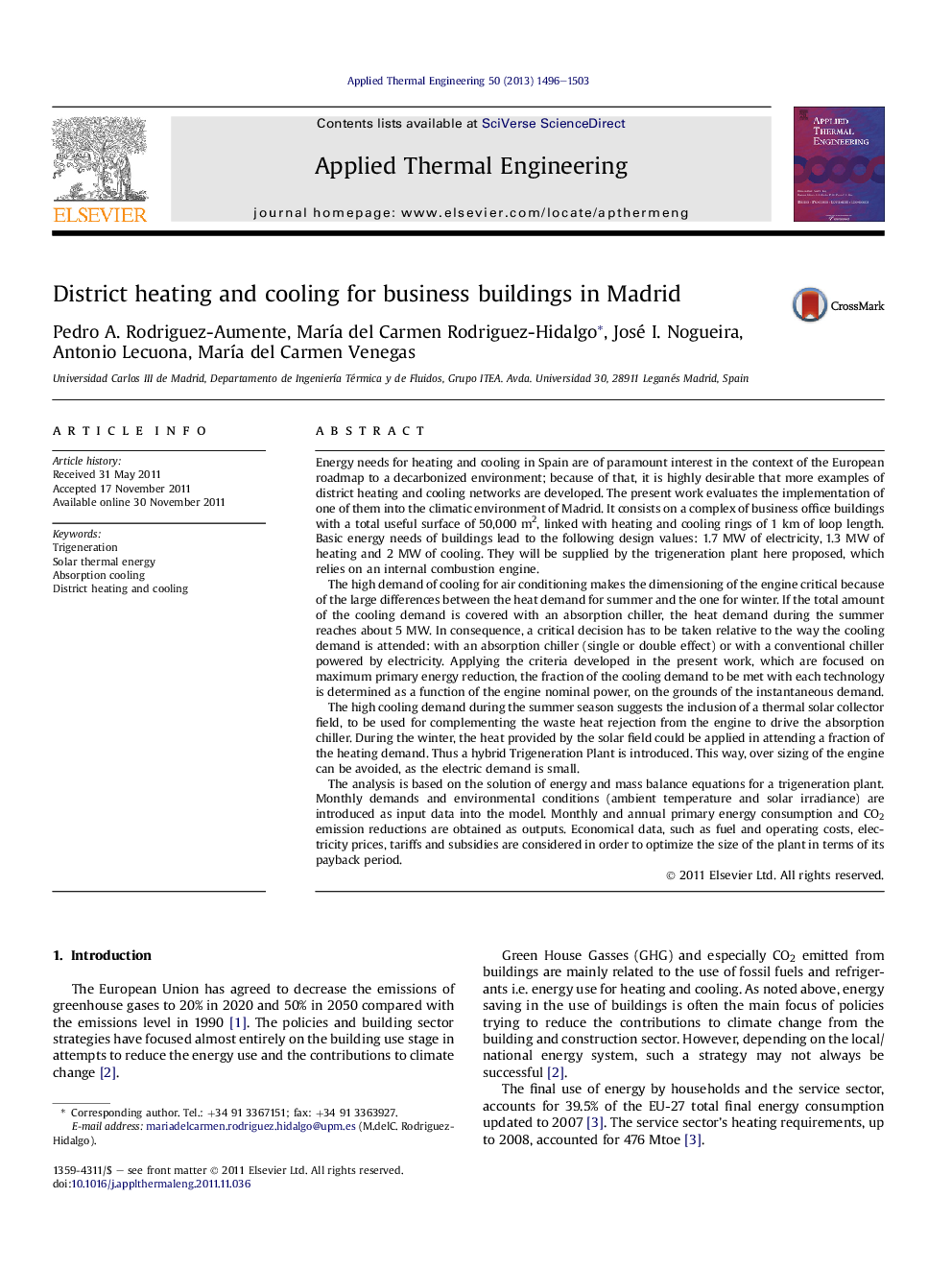| Article ID | Journal | Published Year | Pages | File Type |
|---|---|---|---|---|
| 647185 | Applied Thermal Engineering | 2013 | 8 Pages |
Energy needs for heating and cooling in Spain are of paramount interest in the context of the European roadmap to a decarbonized environment; because of that, it is highly desirable that more examples of district heating and cooling networks are developed. The present work evaluates the implementation of one of them into the climatic environment of Madrid. It consists on a complex of business office buildings with a total useful surface of 50,000 m2, linked with heating and cooling rings of 1 km of loop length. Basic energy needs of buildings lead to the following design values: 1.7 MW of electricity, 1.3 MW of heating and 2 MW of cooling. They will be supplied by the trigeneration plant here proposed, which relies on an internal combustion engine.The high demand of cooling for air conditioning makes the dimensioning of the engine critical because of the large differences between the heat demand for summer and the one for winter. If the total amount of the cooling demand is covered with an absorption chiller, the heat demand during the summer reaches about 5 MW. In consequence, a critical decision has to be taken relative to the way the cooling demand is attended: with an absorption chiller (single or double effect) or with a conventional chiller powered by electricity. Applying the criteria developed in the present work, which are focused on maximum primary energy reduction, the fraction of the cooling demand to be met with each technology is determined as a function of the engine nominal power, on the grounds of the instantaneous demand.The high cooling demand during the summer season suggests the inclusion of a thermal solar collector field, to be used for complementing the waste heat rejection from the engine to drive the absorption chiller. During the winter, the heat provided by the solar field could be applied in attending a fraction of the heating demand. Thus a hybrid Trigeneration Plant is introduced. This way, over sizing of the engine can be avoided, as the electric demand is small.The analysis is based on the solution of energy and mass balance equations for a trigeneration plant. Monthly demands and environmental conditions (ambient temperature and solar irradiance) are introduced as input data into the model. Monthly and annual primary energy consumption and CO2 emission reductions are obtained as outputs. Economical data, such as fuel and operating costs, electricity prices, tariffs and subsidies are considered in order to optimize the size of the plant in terms of its payback period.
► In this study a methodology of trigeneration plants sizing is described. ► The trigeneration plant supplies a business office building located in Madrid. ► Monthly description of the building demand seems more advisable to correct equipment sizing. ► Different operation modes are compared and classified depending on economic savings. ► If a solar thermal plant is implemented CO2 reduction and primary energy savings will increase.
